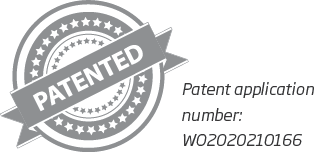
Boundary Layer Technologies’ Patent Application Revolutionizes Hydrofoil Technology for Cargo Ships
Hydrofoils are well known for reducing drag in waterborne vessels, operating like underwater wings, which lift the hull out of the water. As the speed of the vessel increases, so does the lift of the hydrofoil, potentially raising the hull completely out of the water.
This results in increased speed and reduced hull drag, as well as improved fuel efficiency, an especially important consideration in the world of cargo shipping. With sustainability being a  key focal point worldwide, and with emission reductions in the maritime industry coming under increasing pressure, boosting efficiency has become a priority for the sector.
key focal point worldwide, and with emission reductions in the maritime industry coming under increasing pressure, boosting efficiency has become a priority for the sector.
A recently published international patent application by Boundary Layer Technologies, Inc., a start-up company incorporated in California, identifies a number of current challenges regarding hydrofoils which it seeks to address as it adapts them to cargo ships.
Firstly, there is the issue presented by travel at low speeds. If the vessel is not being lifted by the foil, i.e. is not in a ‘foilborne’ state, then the hydrofoil becomes an additional drag-inducing surface, alongside the hull.
The second challenge surrounds control. Hydrofoil crafts have three key speeds. A take-off speed, at which the foil begins to generate lift; a foilborne speed, where the hull of the craft is entirely raised out of the water; and a cruising speed, at which the weight of the craft is equal to the lift of the hydrofoils. When the vessel is moving faster than the cruising speed, the foils may provide so much lift that they themselves are lifted out of the water, causing the lifting force to collapse. This can cause an uncontrolled descent of the craft back into the water.
To address this, the aim of the invention is to have a low takeoff speed – to maximize the use of the hydrofoils across the speed range of the vessel – but a high cruise speed to avoid losing control of the vessel’s descent. The patent has sought to build on the basic concept of hydrofoils in a way that reaps the benefits whilst mitigating the challenges.
As can be seen from Figure 1E, the patent application refers to a vessel (100) which comprises a hull (110) and a number of hydrofoil assemblies (120). Hydrofoils (122) are connected to the hull by respective hydrofoil supports (124), which may comprise elongated booms or struts that can move up and down to extend and retract from the vessel. In the example, the hull is lifted above the water line (115) by the hydrofoils nearest the bow and the stern, and the centrally-positioned hydrofoils are raised out of the water. This is an example configuration of the vessel being foilborne, with the central hydrofoils raised to reduce the plan area, balancing the lift with the increasing speed of the vessel in the direction of travel (300).
The document also includes examples in which the hydrofoils may be extended, but only partially. In Figure 1G, they are all partially extended by the same amount. Any one of the hydrofoils may be extended or retracted by any length to fit the needs of lift or speed. By adjusting the extension of the hydrofoils, the supports can be altered to minimize the drag below the water line. Changing the extension of the hydrofoils can also be performed during operation of the vessel to adapt to the desired lift and cruising speed.
For any company, and for start-up companies in particular, having commercially-relevant pending IP rights in place can give investors greater confidence that the market share targeted by a start-up can be protected. This can in turn give them increased certainty of a return on their investment.
Boundary Layer Technologies’ invention allows it to target increases in speed and efficiency of maritime cargo transport. If that can be coupled with commercially-relevant IP protection, it could place itself as a leader in the maritime transport sector in the near future.
Russell Edson is a partner and patent attorney at European intellectual property firm, Withers & Rogers. He specializes in advising innovators of technologies for use in a variety of transport industry settings – road, rail, air and marine.
www.withersrogers.com